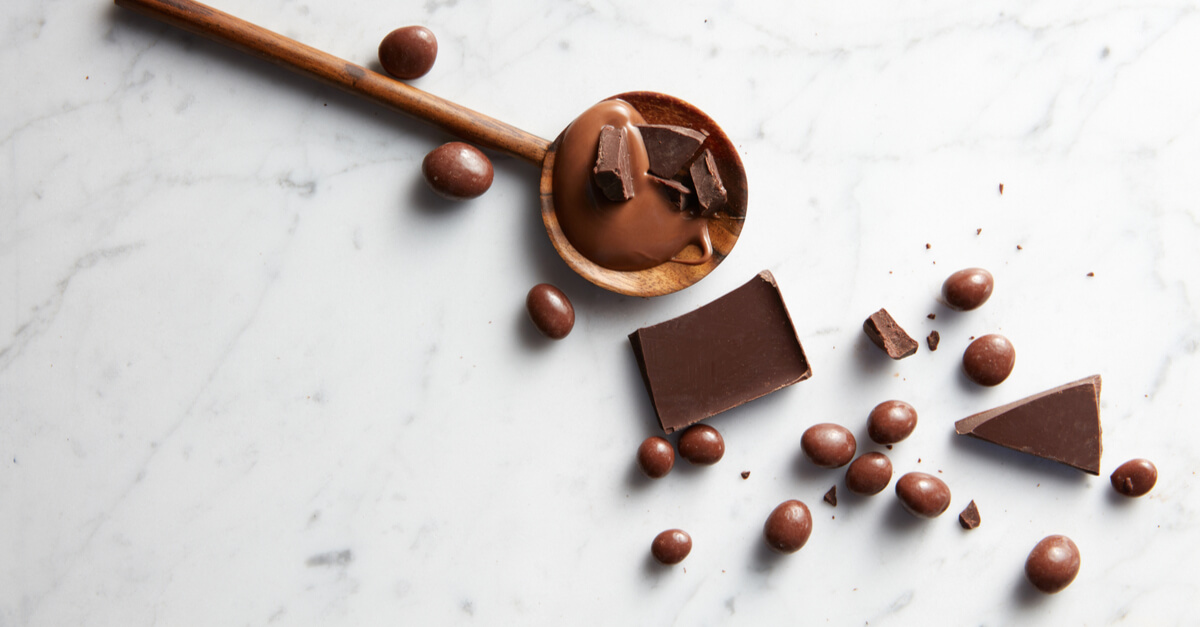The Struggle:
Culinary Crystals are a great way to add intrigue to any dish. They are a customizable pop rock style candy that can be used in sweet or savory applications. But adding them to any dish takes a little bit of know how. You’ve heard cliche, “one bad apple spoils the whole bunch”? Well, a little bit of water can set off a popping chain reaction with Culinary Crystals. The one thing you absolutely need when you get the Culinary Crystals is the flavor base. The flavor base is a thin fat coating that hardens and can protect the crystals from the ever intrusive, water. So what about other fats? It’s commonly forgotten that chocolate is fat. It has tons of flavor and doesn’t feel greasy. So can you use fats like this to coat your Culinary Crystals?
“Could chocolate be the perfect coating for Culinary Crystals?”
Coat It So You Can Float It
Chocolate is probably the best fat to coat any food in, as long as you want it to taste like chocolate. So adding Culinary Crystals to chocolate will work under most circumstances. This does not mean that in every instance if your recipe has chocolate then magically the culinary crystals no longer react with water. The Culinary Crystals can be added to a small amount of chocolate to coat them just as you would the flavor base. The ratio for this will be slightly higher than the flavor base. I suggest about 2 teaspoons of melted chocolate for 1 oz of Culinary Crystals. This just ensures all the crystals will be coated.
Pro tip: Make sure the chocolate is just barely melted as adding too much heat can pop the crystals.
The crystals can be spread out and separated onto a non stick mat and allowed to set for 1 minute in the freezer. These small chocolatey crystals can then be added to your favorite dishes. Sprinkling some chocolate crystals onto chocolate mousse or adding them into an ice cream is a breeze. Just make sure they are completely coated and you can have chocolate culinary crystals in no time.
An issue that has come up recently is adding Culinary Crystals to chocolate ganache. Ganache is a mixture of cream and chocolate. With such a high amount of fat, ganache seems like the perfect place to add Culinary Crystals. While the crystals may not pop and fizz immediately when they are added to the ganache the small amount of water from the cream will activate them over time and dissolve them into little sad syrup pockets. So as we said before make sure it is chocolate and only chocolate that you are adding to the culinary crystals. If you want to add chocolate coated crystals to a ganache you will need to follow some rules. To add the crystals to ganache you will need to make sure the ganash is not hot enough to melt the chocolate. We suggest the ganache be cooled before folding the coated crystals in, or else you will end up with the same result.
The best way to add these to a chocolate is into a tempered chocolate. Tempered chocolate is a method of slowly heating chocolate and cooling it to re-establish the crystals (not to be confused with Culinary Crystals) in the chocolate. This leads to a shiny chocolate with a perfect brittle texture. Once the chocolate has been tempered it will have the best texture and will not melt as easily. The Culinary Crystals added to this mixture do not require the flavor base since the chocolate has become the flavor base. This also works well for making chocolate truffles as the ganache can be in the center and the exterior can be a tempered chocolate shell with Culinary Crystals ready to pop off when eaten.
So then next time you want to innovate using Culinary Crystals, follow these tips to hopefully get the best out of the dish you are preparing.
Do you have a recipe you just can’t seem to figure out? Shoot us an email or drop us a line and we will do our best to guide you to the right option.


